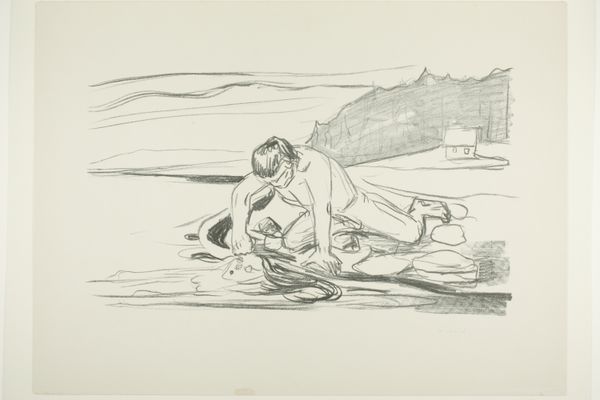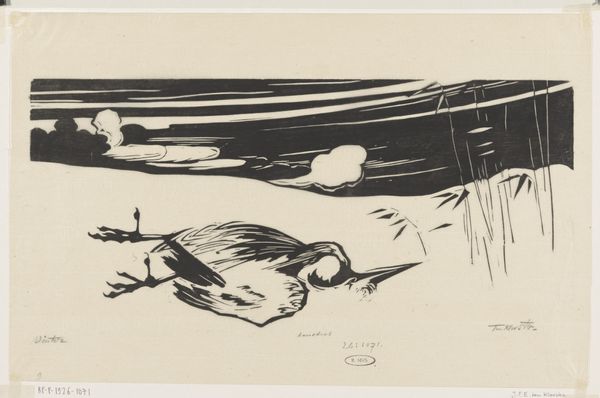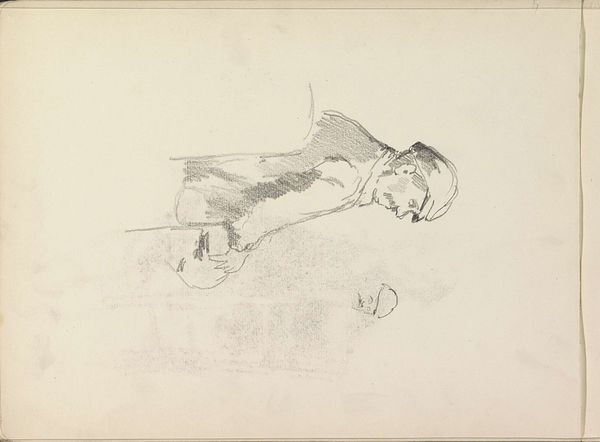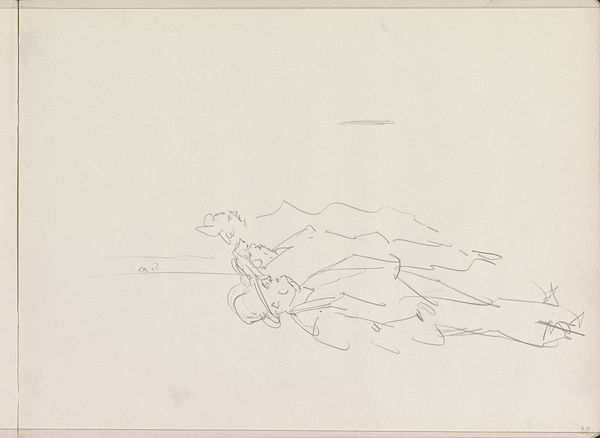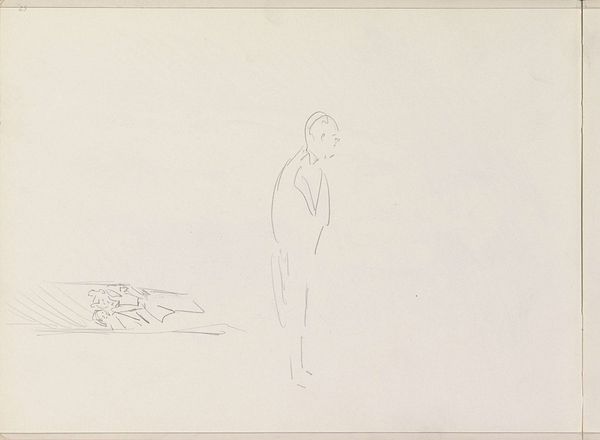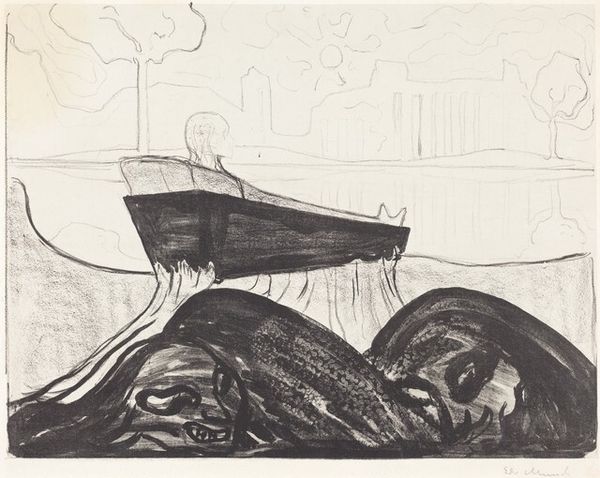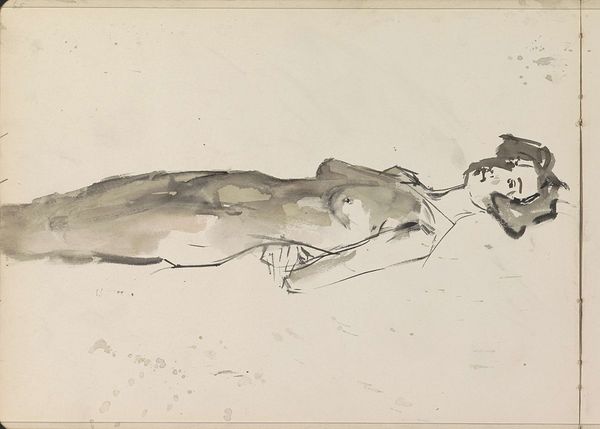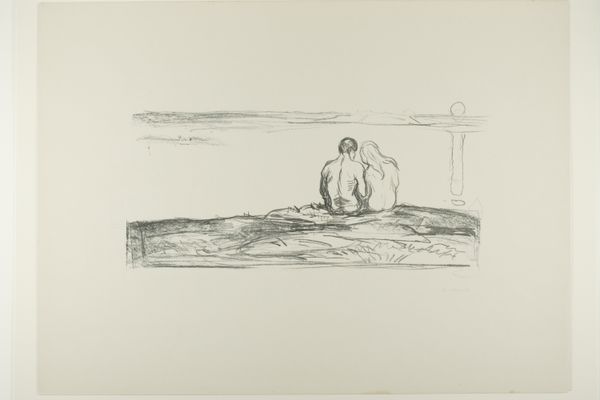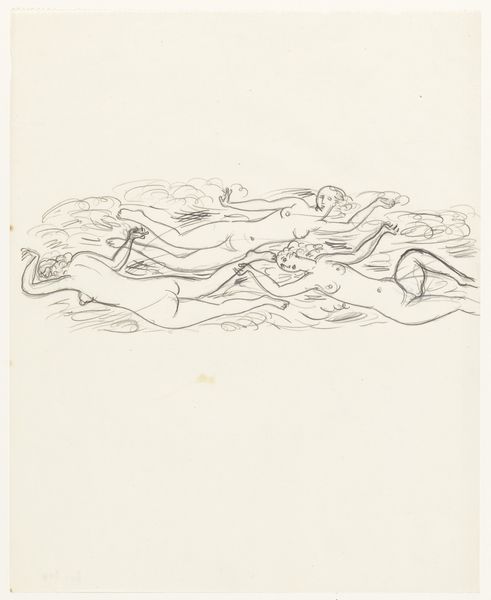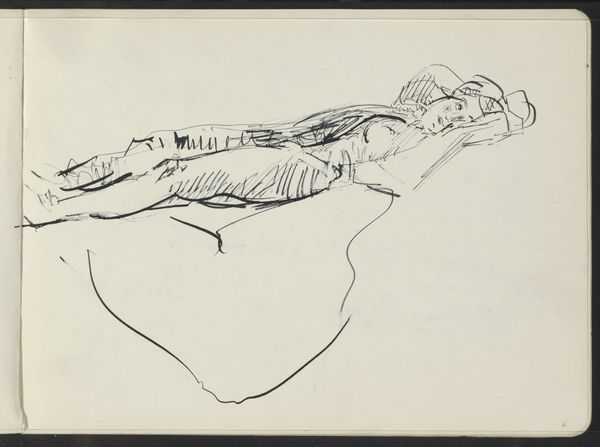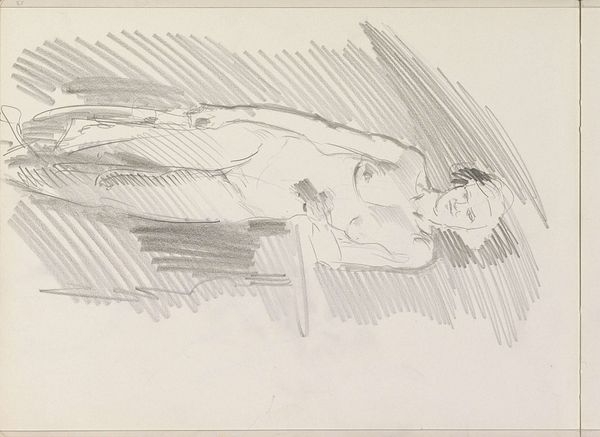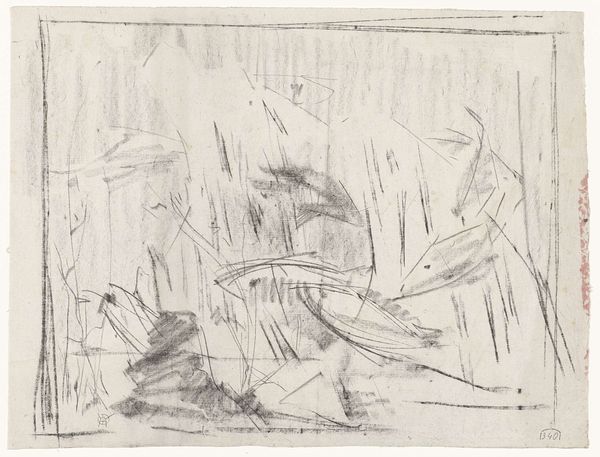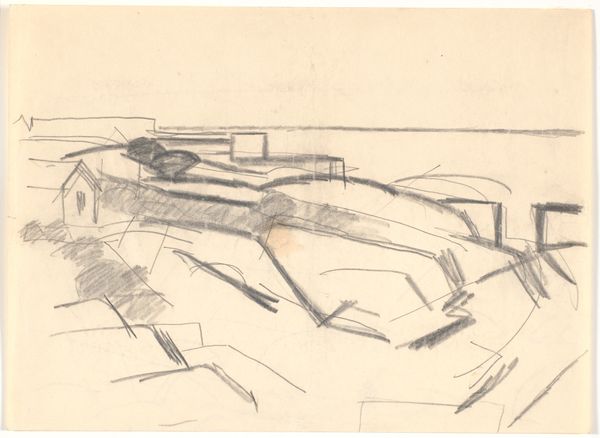
Dimensions: 255 × 496 mm (image); 481 × 651 mm (sheet)
Copyright: Public Domain
Editor: Take a peek at Edvard Munch’s "Omega’s Flight," a lithograph from around 1908, currently at the Art Institute of Chicago. I'm really struck by how raw and immediate it feels, given it’s a print. What can you tell me about it? Curator: I'm immediately drawn to the artist's use of lithography to engage with the concepts of labor and artistic production. Notice the way Munch has deployed line and shadow. How does the application of graphite serve to underscore the socio-economic circumstances informing artistic output, and is Munch maybe reflecting on the commodification of leisure? Editor: That’s an interesting point; I hadn’t really considered it in terms of commodification, more about... solitude. What specifically about the lines and shadows brings the labor aspect to mind for you? Curator: The frenetic lines of the water, rendered with an etching technique that suggests immense effort, contrasted with the relatively simple rendering of the nude figures. Doesn't it subtly undermine traditional hierarchies of art – figure versus landscape, drawing versus more 'finished' forms? How might the 'finish' point towards consumption, production, the market and exchange itself? Editor: I can see how you'd make that connection now, comparing the labor invested in creating the scene versus the… I suppose, the figure is also ‘produced,’ a result of labour too? The juxtaposition implies commentary on the differing values society assigns? Curator: Precisely. Consider, too, the accessibility of printmaking, of art, as challenging elitist norms. Editor: That makes me rethink my initial impression quite a bit. Seeing the ‘accessibility’ offered by printmaking. Curator: Munch's artistic choices highlight the intricate connection between production and the art market, something often obscured when looking only at ‘high art.’
Comments
No comments
Be the first to comment and join the conversation on the ultimate creative platform.
